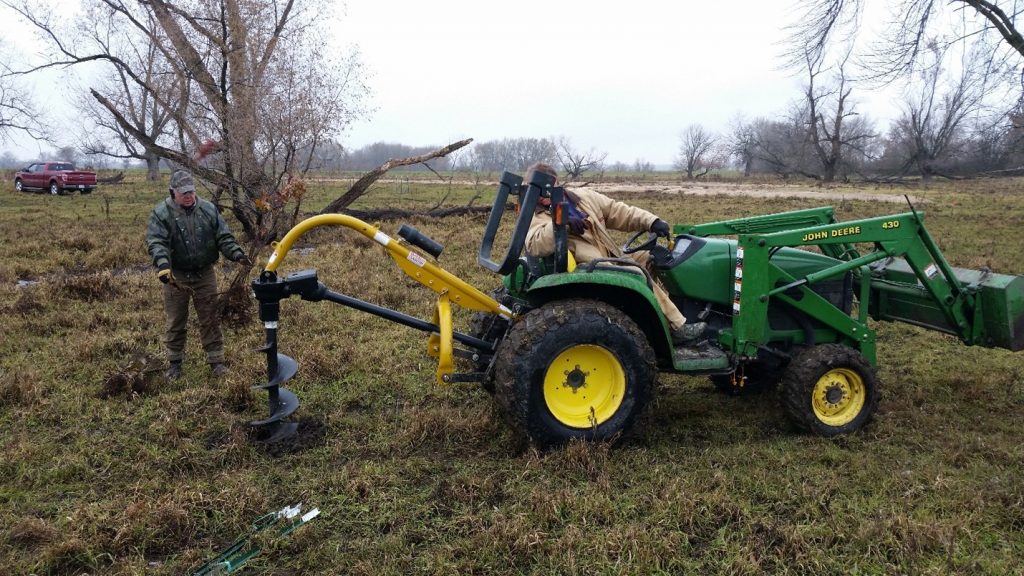Phase Six of Wapsi River Bottoms Open Oak Woodland Restoration Complete
Oak woodlands, once a dominant feature in Iowa’s landscape, are vanishing at an alarming rate. Their loss has led to the decline of many native wildlife species, including wild turkeys. The Oxford Junction WMA, a 550-acre floodplain along the Wapsipinicon River, is a focal point for this restoration work. Over the past five years, the Iowa Department of Natural Resources and the Iowa NWTF State Chapter have collaborated to restore oak woodlands on the WMA by planting trees. Recently, phase six of the project was completed, with an additional 100 trees planted on the WMA.
In 2018, the Iowa DNR acquired the 200-acre Burda Tract within this WMA, and since then, the DNR and its partners, including the NWTF, have planted 780 oak seedlings on this tract alone, 530 of which have been caged and protected from browsing and rubbing. Approximately 120 acres of the WMA were historically used as pasture, and today, the land is dominated by reed canary grass and scattered honey locust, silver maple and cottonwood, with very few oak trees regenerating naturally. Without intervention, the loss of these hard mast-producing trees would reduce habitat quality for wild turkeys and other species.
The Wapsi River Bottoms Open Oak Woodland project has been ongoing over the past 5 years, steadily expanding the oak woodland footprint by planting new trees annually, including a replanting effort to replace previous seedlings that did not survive.

This year’s efforts used advanced Root Production Method (RPM) seedlings — potted trees with robust root systems that are 5 to 6 feet tall at planting. These trees offer significantly improved survival rates, even under harsh drought conditions, and have already proven successful during previous project phases.
The sixth phase added 100 RPM seedlings to the WMA, establishing four additional acres of future oak savanna. The seedlings — including swamp white oak, bur oak, pin oak and northern pecan — were planted by a professional forestry contractor and herbicide was applied around them to reduce early competition. Iowa DNR staff will continue to maintain the site through watering and weed control.
“Iowa volunteers greatly value public land and enthusiastically support projects that propose to acquire more and manage it once acquired,” said John Burk, NWTF district biologist for Iowa, Illinois and Missouri. “So much so that the Big River Longbeards got directly involved in earlier phases of this project by helping plant trees.”
These efforts will turn existing habitat into exceptional habitat, not just for wild turkeys, but for a wide range of wildlife. The long-term goal is to create an open oak woodland with mature, broad-canopied trees and a healthy understory of grasses and forbs — an increasingly rare habitat in Iowa. The project enhances late-season food availability, nesting and brooding cover and roosting habitat for wild turkeys while also benefiting many non-game species.
The Oxford Junction WMA supports year-round populations of Iowa wildlife, and restoration efforts not only benefit wildlife in the WMA but also improve recreation for hunters and other outdoor enthusiasts who recreate on this WMA. The site has already become a popular destination for regional hunters and outdoor recreationists, and its value will only grow as restoration continues.
The Iowa DNR plans to incorporate the restored area into its long-term forest management plan, managing it as an even-aged oak stand into the next century. Permanent NWTF signage will be displayed at the entrance to the WMA to recognize the organization's ongoing commitment to public lands and habitat conservation.
